15 Best Landing Page Optimization Tools To Try TODAY
Your landing page is your company’s most important asset in terms of branding and converting your leads. A critical aspect of converting your traffic into customers is using the best tools in the market for your needs.
To optimize your conversion rate, I have listed the tools that you can use today to maximize your landing page’s effectiveness.
Optimizing your landing page is a process of continuous testing, improving metrics, analyzing visitors’ user journeys, creating funnels, and more.
These tools will allow you to have the features ready for you to maximize your conversion rate in the least time.
In a rush? Click here to skip to the first tool!
How Do I Optimize My Landing Page?
To start landing page optimization, you should first consider reaching different users from different channels.
For this reason, you should create different landing pages for users from different channels and optimize them for future users.
At the same time, you should keep in mind that the demands of the audience and the trends of the industry in which your product is located will constantly change.
That’s why you should not only think about today but also one step ahead. At the same time, you must be open to continuous testing and improvement.
Once you understand the philosophy and requirements of the landing page, you can start digging into the details of optimization.
- The use of an eye-catching and compatible image allows you to present the message the landing page wants to convey, bypassing the need for dozens of words. The user’s connection with your product through the image will also trigger the visual memory and will both increase the memorability of your product and strengthen user engagement.
- It is important that the main headline and subheadings mobilize the user. But headlines that are specific to your product, have a message and reflect the spirit of the brand radically separate your landing page from an ordinary landing page. The fact that users feel they are communicating directly with your product makes your product unique in their eyes.
- Having call-to-actions that push the user to the product quickly and actively is also essential for a landing page. Short and clear CTAs make a significant difference to the landing page when used prominently.
- The trust factor is one of the main factors that make a product preferable compared to other products in the first place.
- When you highlight the achievements (for example, badges or certificates) approved by trusted institutions for your product on the landing page, the user’s perception changes in a positive way.
- At the same time, by presenting the reviews about your product in the online environment to the user, you can get rid of a robotic sense of trust and create an organic trust instead of it.
- By adding a non-tiring form, you can create a strong boost to your Lead generation process. The user you activate with the right words will be willing to fill out the form.
- It is also important that you choose the visual template and colors in a way that is easy on the eyes but highlights important elements.
- Finally, you should check the technical details with qualifications. A slow-loading landing page that doesn’t load properly will lose all its glory.
The most important thing is to work with the right tools and qualified people.
When the optimization is done correctly, it will become a unique experience for the user. This will cause you to see an improvement in all key metrics.
What Are Landing Page Metrics?
The easiest way to tell if a landing page is optimized correctly or has become dysfunctional since the last optimization is to monitor key metrics regularly.
Here are some of the metrics that are vital for landing page optimization.
Number Of Visits
Knowing how many people are visiting your landing page has important implications for whether your campaigns reach the right audience.
If a large number of users visit your landing page, it means that your ad campaigns are attracting attention.
Conversion Rate
Leading pages are designed to guide the user to the target without facing a tiring process.
Knowing how many of the users who visit your landing page do the action you want (such as filling out a form or starting a product subscription) not only shows the quality of your landing page optimization but also gives information on behalf of your advertising campaign.
Bounce Rate
Bounce rate indicates whether the user left your page without going to any additional pages. It is a metric that gives direct information about your landing page optimization.
For this reason, if you are observing a high bounce rate, you may consider the possibility that.
- Your landing page may not be suitable for the user you are targeting, it may not providing the essential information about the product or it may simply be not interesting.
- It can be visually complex or not unique.
- It can be technically problematic for the user.
If you are monitoring a high bounce rate, you should optimize your page.
Users By Source
Understanding which sources users reach you through is essential to understand which platform users are interested in your product.
You can create entirely optimized by considering little details and more successfully segmented landing pages for channels that stand out and have the potential to generate revenue.
Average Time On Page
High or low time spent on the page cannot be directly defined as good or bad. This mostly depends on your product.
For example, if your product is in an industry where technical details make a difference, a short stay on the page may not be a good sign.
Or, if you have a product that requires immediate attention from the user, a long page visit may mean creating a tiring experience for the user.
In line with these metrics, you can measure the success of your optimization, or you can get tips on creating a new optimization plan.
Analytics Tools
Google Optimize
Google Optimize is a free tool that allows you to A/B test your website with no code. You can edit everything in great detail.
You can also integrate your new testing variations with Google Ads, Firebase, etc. to see direct results.
A/B testing is widely used by companies around the world. In fact, Microsoft Bing performs more than 1,000 tests per month, Amazon, Booking.com, Google, and Facebook each conduct more than 10,000 online controlled experiments per year, and multiple A/B tests for the Obama campaign increased revenue conversions by 79% led to $75M additional revenue.
So if you think that your business is not suitable for A/B testing, you are totally wrong. Every business must conduct A/B tests.
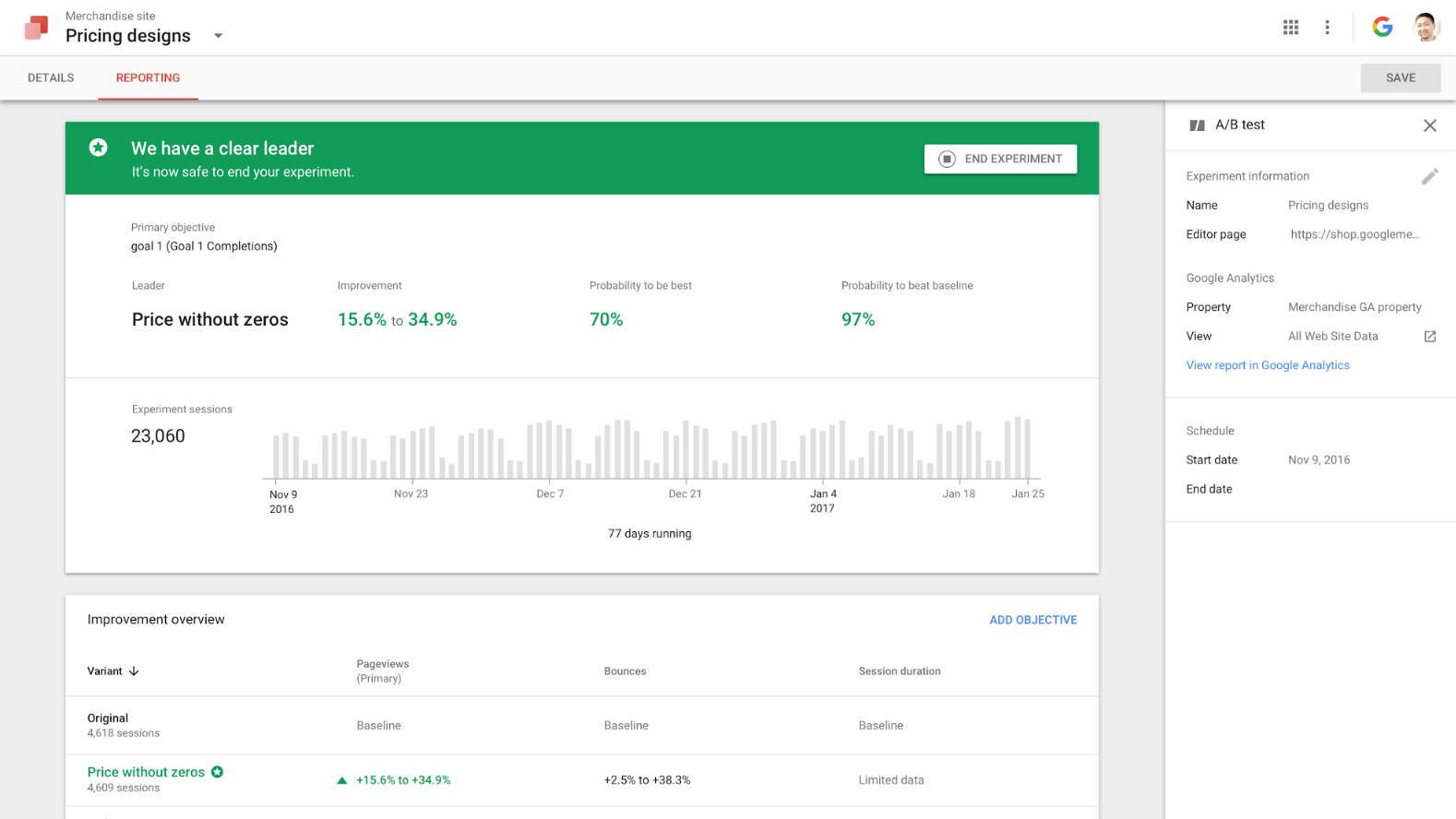
HockeyStack
HockeyStack is a SaaS analytics tool that helps you uncover what affects your revenue growth. You can connect product metrics with marketing, revenue, and sales to understand which features lead to expansion revenue, which sales sequences bring the most engaged users, and more.
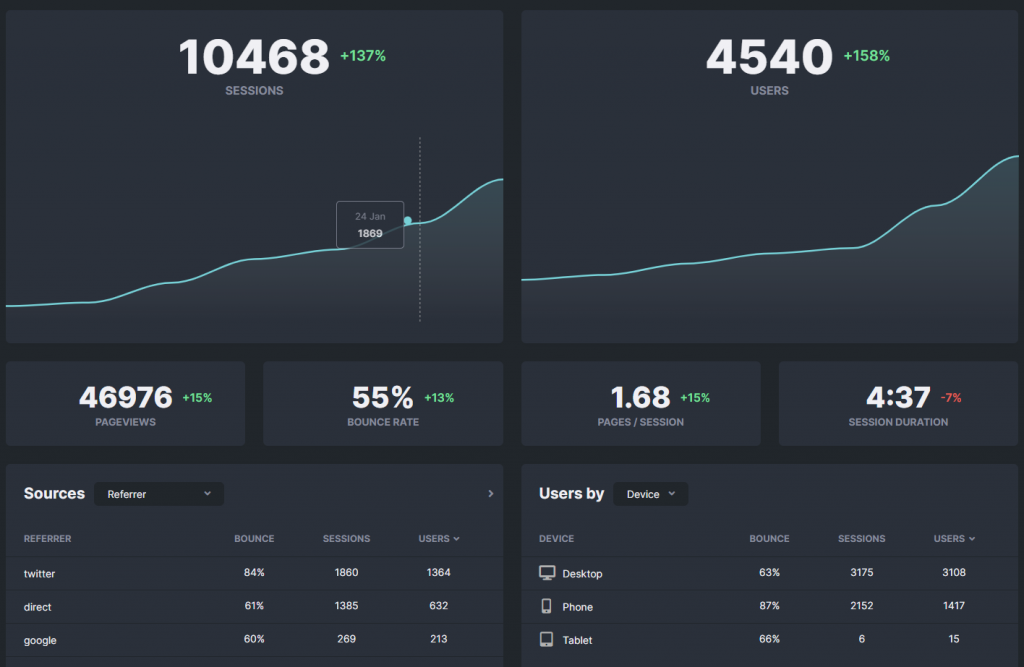
On top of the goals, funnels, segments, and essential landing page optimization metrics, you can build any dashboard you need using no code.
You can build a blog posts that drive revenue report:

An automatic goals report that shows you where the majority of your visitors click on so that you can define them as goals with one click:

An expansion funnel report:
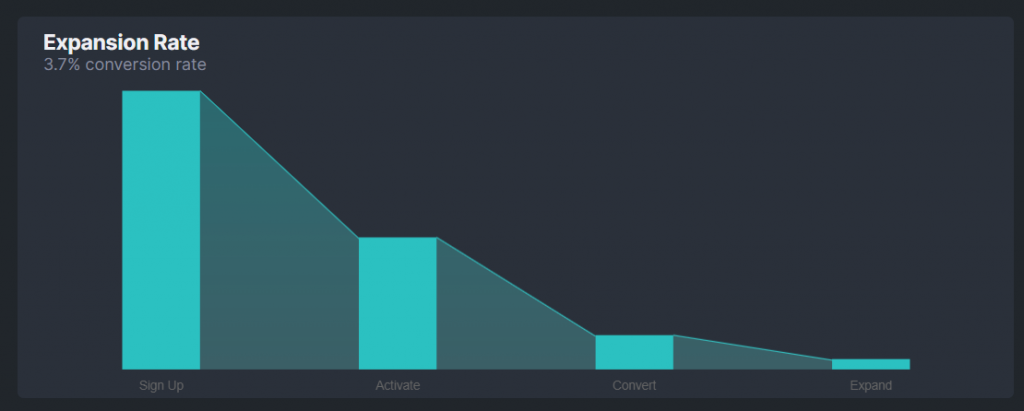
An engagement by plan report:

On top of custom dashboards, HockeyStack has other features too, such as
- Surveys
- Step-by-step user journey
- Funnels & goals
- Revenue Attribution
and more.
HockeyStack Pricing
HockeyStack has a free forever plan and 3 paid plans. Paid plans have a 14-day trial with a 30-day refund guarantee.
You can check out the pricing page here.

Optimizely
Optimizely is also an A/B testing platform, but it’s an enterprise solution with a cost of +$36000/year. Compared to Google Optimize, it has some advantages too.
- Optimizely allows users to experiment with multi-pages and third-party integrations which is missing in Google Optimize.
- While Google Optimize allows you to have 3 goals per experiment, Optimizely doesn’t have such limit.
- In reporting, Google Optimize counts each session as a unique users, which means that it counts users more than once so the data is not 100% reliable. On the other hand, Optimizely takes a user-based approach and counts each unique users rather than sessions.
- And Google Optimize’s Search Console, Firebase, and Google Ads integrations are much easier and better than Optimizely


Create Landing Page
An integral part of your business is targeting the right audience, and it’s the same for your landing page too. Businesses that have more than 30 different landing pages get 7x more leads than companies with less than 10 landing pages.
30 landing pages might seem like a lot or not worth the time, however if you are familiar with the jobs to be done framework, you will quickly realize that there are more use cases of your product than there are target personas.
There should be a seperate landing page for each paid ad, persona, job to be done, and competitor comparison page.
These tools will help you create more landing pages in a few minutes so that you can target your audience better.
Unbounce
Unbounce is a no-code landing page builder that has A/B testing, popups, and sticky bars built-in. It may be your perfect solution to create more landing pages with minimum effort, time, and money.
After creating a few variations, Unbounce’s Smart Traffic feature automatically divides the audience to different variants and start analyzing the data. The shocking thing ig it starts A/B testing after only 50 visits!

Unbounce has a built-in drag-and-drop builder, 1000+ templates to choose from, script manager. As for integrations, they have tons of integrations.
The second plan, which allows for 30.000 visitors and 1000 conversions costs $120/month, and has a 14-day free trial.
Instapage
Instapage is a landing page builder that is focused on getting the most out of advertisement campaigns.
It has a revolutianry feature called “AdMap” that is a popular feature for funnel visualization products, but not landing page builders. With Instapage, you can create different landing pages for each and every advertisement campaign and track their effectiveness with AdMap.
- Why does that matter? Why do we need different landing pages for different ads?
Usually, when you click on an ad that’s interesting to you, the landing page is a generic one, so you bounce as you were interested in one particular aspect of a product.
For example, if you click on a cold email product’s image personalization feature ad, but the landing page shows you all the features that the product has with a long and boring copy, then your interest fades away quickly.
InstaPage also has a postclick scoring system that allows you to score your campaign’s relevancy to the audience. Similar to Unbounce, you can A/B test your landing pages to optimize your conversion rate. However, there are only 2 plans: $299 and custom pricing, so it’s more expensive than Unbounce.
An interesting feature of Instapage is team collaboration. Other members of your team can edit the landing page live and comment on the landing page elements too. However, all these enterprise focused features come with a price. Instapge has only 2 plans: $299 and custom pricing, so it’s more expensive than Unbounce.
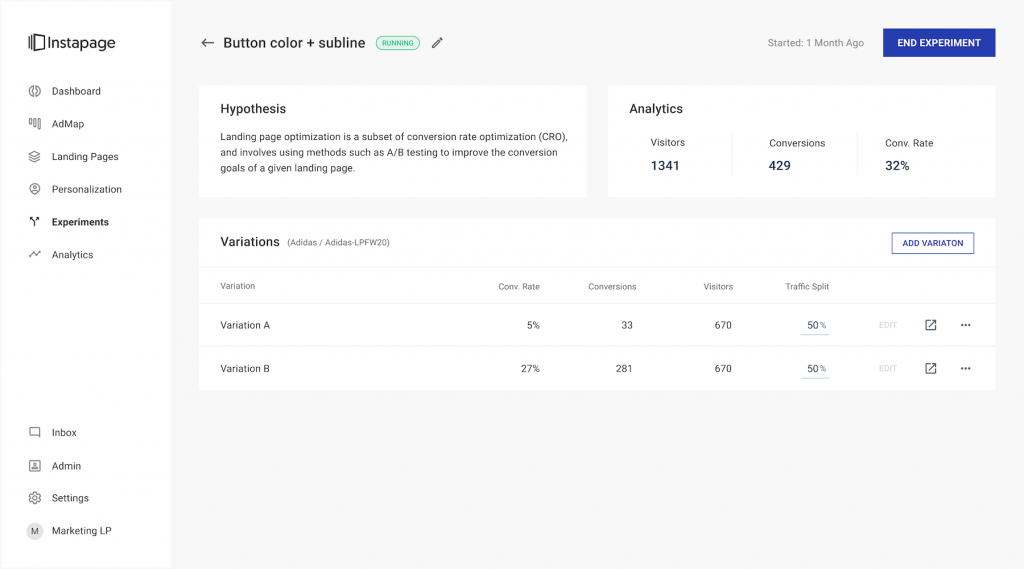
Mailchimp
You might have heard Mailchimp is a email marketing solution, but it has been growing in the landing page space too. They even sell domains right now.
Similar to Shopify’s [Buy Button](https://www.shopify.com/buy-button#:~:text=Shopify Buy Button lets merchants,receive marketing emails from Shopify.)), MailChimp allows you to create simple landing pages with minimum effort and time. You can also get payments, create newsletters and use MailChimp’s mail features, and advertise through Mailchimp.
After you get some visits and signups, Mailchimp helps you find new people who are likely to engage with your brand through advertising campaigns.

Probably the biggest advantage is its price: $0.
Mailchimp’s landing page builder is completely free, but you need to upgrade your plan if you want more advanced CRM and email features that Mailchimp offers.
If you have a new idea, it would be a quick and simple way to test it for free using Mailchimp’s landing page builder for free.
Improve the User Experience
Better UX design as a result of user testing can increase a company’s conversion rate by 400 percent. (Entrepreneur, 2018)
5 second test
5 Second Test from Usability Hub is an interesting game to optimize the user experience. It shows the landing page and then automatically creates a quiz that asks “Which elements do you remember from this page?”
This test allows you to see how effective your elements are and which elements catch users’ eyes.
Browsershots
There are too many browsers that your users are using and they are updated frequently. As a business owner or developer, it’s really hard to download each and every one of them to test your landing page.
Browsershots shows your landing page on different browsers so that you can be sure about the compatibility of your landing page.
UserTesting
UserTesting has a massive amount of user base that can record a video while testing your product/landing page.
They comment while viewing your landing page to tell which parts were clear to understand, what they understand from your website and more.
It’s a scalable method of user experience testing that allows you to target specific users inside the platform.
You can use UserTesting to test your A/B tests, new concepts, new features, marketing campaigns, and designs.
UserTesting ensures great customer service by paying the testers ($30 per hour) and having a relatively long new tester signup process.
Turn Your Organic Traffic Into Leads
These tools are not exactly conversion rate optimization tools, but they still contribute to it as they will allow you to have more organic traffic, nurture your leads, and get more emails from your existing traffic.
An integral part of today’s businesses is organic traffic and converting that traffic into leads. These tools will help you grow your search traffic, understand your organic traffic, and convert them into leads.
If you want to see a detailed list of the best SEO reporting tool to use in 2021, you can see our thorough list here.
Sumo
Sumo is a free no-code email capturing tool that allows you to grow your email list in seconds. The only thing you need is to copy and paste the integration code of Sumo. (similar to HockeyStack)
Sumo also has Shopify and WordPress plugins, or you can install via Google Tag Manager. However, the majority of adblockers block scripts installed with GTM, so it would be better not to use it.
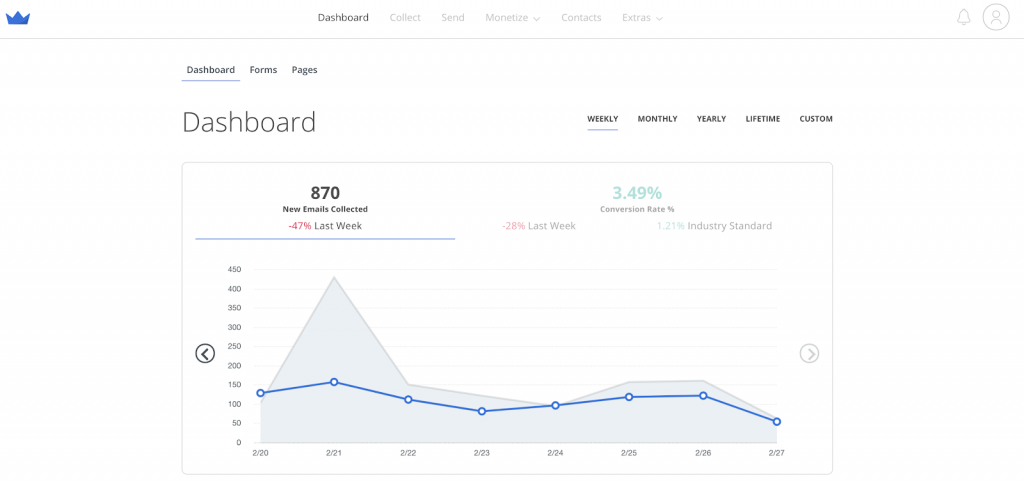
Google Search Console
Google Search Console allows you to analyze your current SEO performance both page-wise and keyword-wise.
You can see how your pages perform, the percentage of clicks you get from search, and errors.
One of the most useful tools that the Google Search Console has is live page test. It basically shows you how Google sees your page. This is important as the majority of the time, search engines may not see your page as you want. If you see any errors, you can check out Google Webmaster Guides.
Overall, Google Search Console is an awesome free tool that every marketer, SEO professional, and business owner should have in their toolkit.
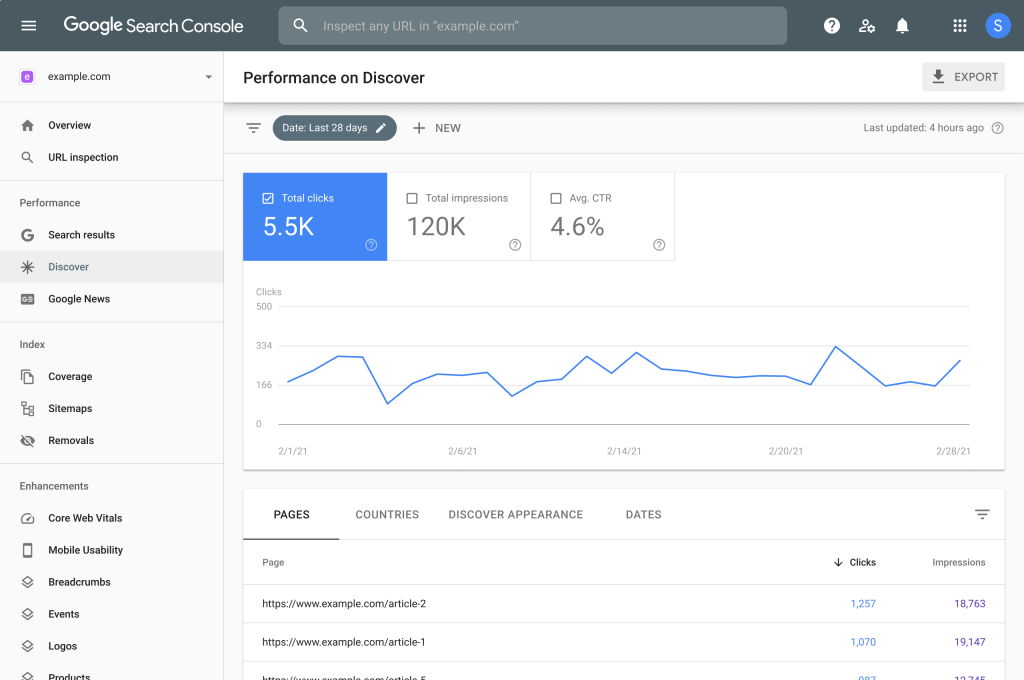
Ahrefs
Ahrefs is an SEO tool that helps you analyze your competitors, find keywords, understand content that gets traffic, and keep track of metrics.
I included Ahrefs as it really helps you grow your search traffic, and if you can grow your search traffic, you will be able to convert more people on your landing page.
Ahrefs also allows you to do a content gap analysis to see keywords your competitors get the most traffic and you don’t. This way you can get a better understanding of the market you are in and reverse engineer you competitors content strategy.
Ahrefs also has an amazing content team that educates its users on SEO, marketing, conversion rate optimization, and more.
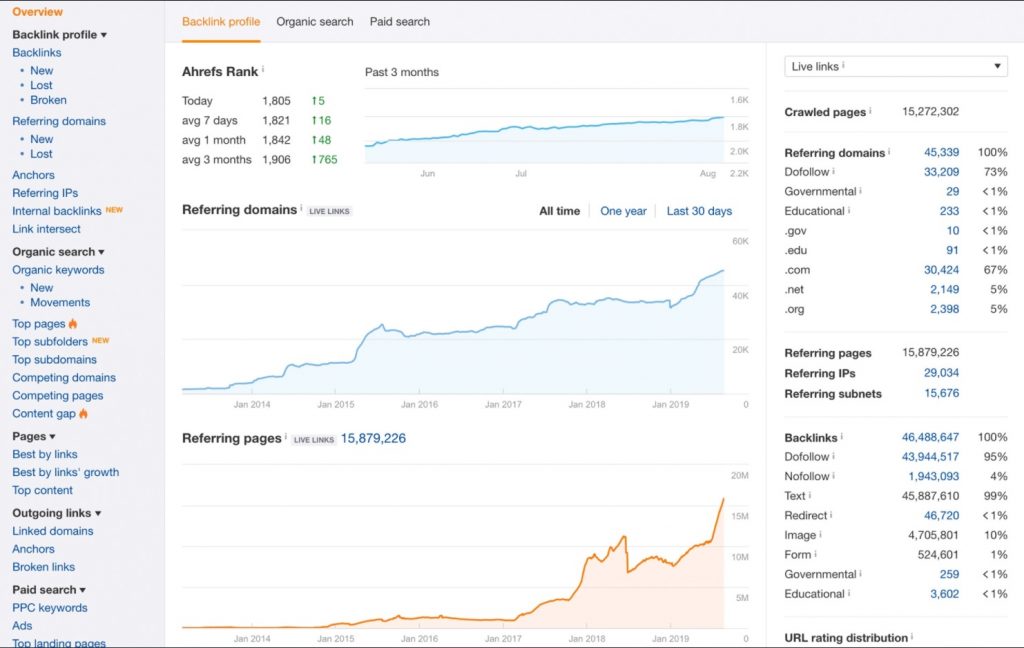
Fomo
Fomo is an interesting software that helps you build trust. Traditional G2, Capterra, Trustpilot reviews also work well, but Fomo takes a different approach and shows notifications to visitors like this one:

These notifications create a “fear of missing out” effect. Similar to Wisepops, you can target visitors based on many segments, create different Fomo notifications, and more.
Compared to their competitors, Fomo has a better design with more options to choose from. It can also give you insights based on your old campaigns, and you can connect it to Scorecard to track conversions.
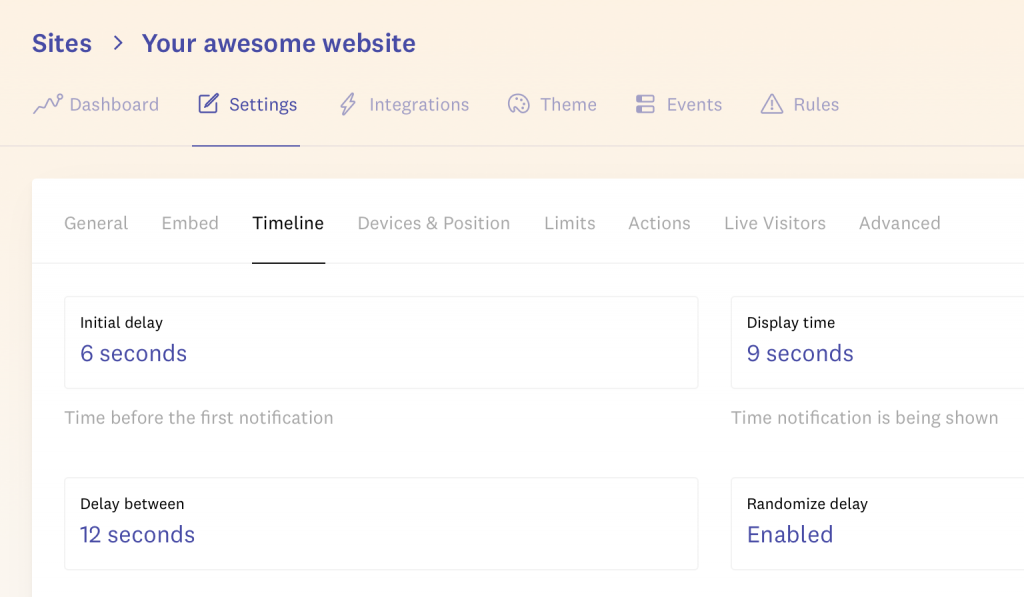
Wisepops
You have your landing page, content, and organic traffic. Now, it’s time to convert the traffic into customers with relevant offers.
Wisepops allows you to create beautiful popups with no-code and minimum time. You can target your visitors based on the pages they visit, their referrers, products purchased, UTM campaign, browser, device, etc.

Alongside A/B testing, you can also target returning visitors, new visitors, visitors from a specific location, and much more. Targeting and optimizing possibilities are endless for Wisepops.
FAQs
Landing page optimization is a process of different steps. First, you need to have a well-designed landing page with carefully placed CTAs. Then you can work on conversion optimization, improving user experience, and turning organic traffic into leads. And luckily in this article, we’ve provided you with the best tools you can use for each of these titles.
There is more than just one best practice for landing page optimization. However, one thing that is really crucial is that your message is clearly delivered. This depends on your landing page design, copywriting, CTA placement, and many other things. No matter what you practice, you need to make sure that it enhances the delivery of your message.



